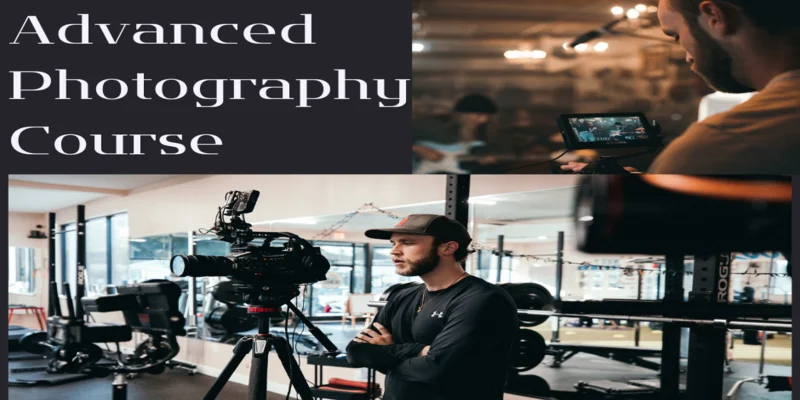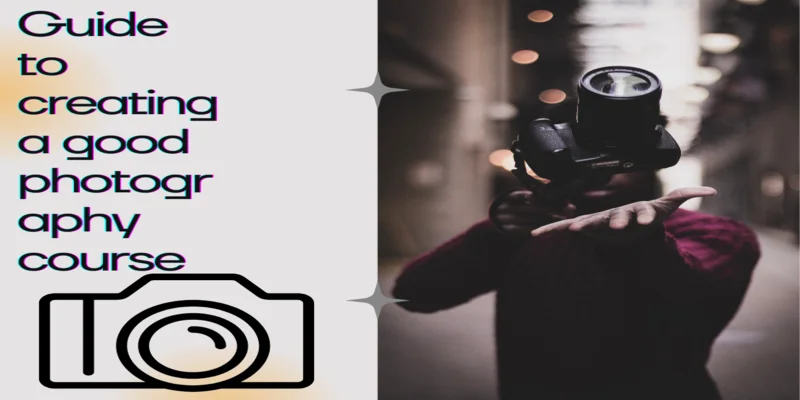Digital technologies have advanced rapidly than any innovation in our history, which has impacted the education sector significantly. It can be said that education has taken a front seat in this transition.
With the ease of online classes, getting education from all over the world has become more accessible. Earlier, the students used to attend physical classes to learn a course, but with online classes, they can do it from the ease of their homes with the assistance of the best teachers. For example, a good photography course can be undertaken easily through various online platforms and students also save time on commuting.
Photography courses have been in demand for some time, and every candidate yearns to learn from the best option in this field. To get the best out of the photography course, the candidates need to understand their requirements and what they expect. The course they select should be easy to understand and comprise of lots of fieldwork and tasks to make them good at photography.
In fact, a growth of 4% in the employment of photographers is projected from 2022 to 2023, which is almost the same for almost all occupations. In this blog, we will discuss how to create an excellent photography course for students.
Eligibility Criteria for the Photography Course
For creating an impactful photography course, there should be fixed eligibility criteria so that only the ones interested can apply for the course and the recruiters can get accurate & meaningful results. This will increase your course’s credibility and provide more exposure to the learners. Let us look at the eligibility criteria a creator should keep for aspirants applying for the course-
- If you create an introductory course, the students can join with a basic camera or a mobile. For the advanced course, you can specify the minimum camera requirements. Accordingly, the students can arrange for it before starting the course.
- The candidate should have completed Class XII in any stream from a recognized board with a minimum aggregate percentage that you can decide based on the course.
These are some minimum requirements that can be set while curating a photography course for the students. But, the conditions can change according to the course.
Types of Photography Courses
When designing a photography course, one should always keep in mind the target audience. The course can be basic, intermediate, or advanced, and it can have many modules; thus, the creator should prepare the course accordingly. These are some of the major photography courses you can opt for according to your photography experience-
1. Fundamentals of Photography
The basic photography course is exclusively for beginners. Therefore, interested candidates who love photography but have no idea where to start can enrol in this course; it will provide them with all the basics of photography. The creator should provide basics to strengthen the foundation that helps students go on to further advanced courses.
2. Advanced Courses
In advanced courses, the creator can create courses and focus on micro-niches, such as lighting, photoshop skills, photography angles, mobile phone photography, and portrait photography. Instead of giving all the information in a single course, it would be beneficial to break it into different courses, where the students can learn as per their requirements. The advanced courses would be topic-specific and provide more insights into a specific photography niche.

3. Refresher/Crash Courses
Students who have undergone a photography course and are looking to understand all photography aspects in a glimpse can opt for refresher courses. The creator should also make refresher courses, as it would provide immense support to candidates looking to revive their photography skills.
Who Can Opt For the Photography Course?
The photography course is not limited to certain candidates. Let us look at who can undergo this course-
- People who are interested in photography
- Individuals who take good photographs
- Amateur photographers who are looking to improve their photography
- Fresher candidates who are looking to indulge in photography
- Candidates who are looking to make a professional career in photography
- People who are looking to brush up their photography skills
Photography course creators must understand that these are your target audience and potential conversions. So, focus on these candidates and design the course, keeping them in focus.
Tips for Creating an Excellent Photography Course
The creator should keep several things in mind while creating a photography course–
- The course should be prepared in simple language so everyone can grasp it easily and swiftly. It should also have the information about the places where they can earn the most as that is one thing that keeps the students motivated.
- When it comes to advanced courses, the creator should focus on specific topics in every course. It would help the students to understand the topic in detail. In fact, it should include different activities wherein they can showcase their skills better. For example, travelling to a unique place and clicking the pictures or giving them one subject and asking them to take 10 different photos of it, etc.
- Try to keep exercises and fieldwork so the students understand the course better. In addition, a better implementation of what is taught would help the students better grasp the photography course.
- Make your course interactive if you are conducting live classes so that the students get more interested in the class.
- The course should have the correct information in the right quantity. Overloading information would lead to students losing interest in the course.
- Always try to keep small exercises and refreshers after ending every module so that the topic is adequately revised.
- The creators should remember that there would be diverse people taking this course. So, the course needs to be simple and covers the topic well, so that everyone can understand it easily.

Conclusion
A good photography course is not hard to create if the course designer properly understands the subject and their target audience. The design of the course ultimately lies in the hands of the creator, but keeping the course crisp and not overloading the students with too much information is the essential factor.
Anyone interested in photography or who wants to advance their knowledge of photography should opt for an online photography course, as it provides you with the benefit of channelizing your time and invest it in learning the photography.



